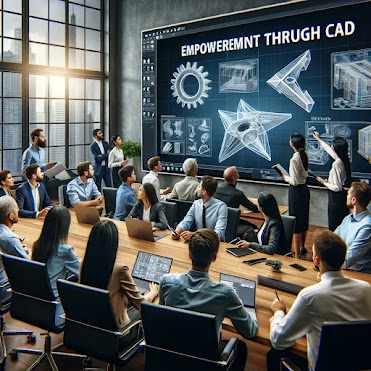Empowering Engineers and Designers: Top Benefits of Using Advanced CAD Tools
In the realm of engineering and design, the evolution of technology has been a game-changer, particularly with the advent and continual improvement of Computer-Aided Design (CAD) tools. These sophisticated software applications have transformed the way professionals in various industries approach design and production, offering numerous benefits that enhance efficiency, creativity, and accuracy. Here, we explore the top benefits of using advanced CAD tools that empower engineers and designers.
1. Enhanced Efficiency and Productivity
One of the most significant advantages of CAD tools is their ability to save time and enhance productivity. Traditional manual drafting is not only time-consuming but also prone to human error. CAD software automates many of the tedious aspects of design, from creating to modifying drawings. This automation speeds up the design process and allows engineers and designers to complete projects faster and with greater precision. By streamlining these tasks, professionals can focus more on the creative and analytical aspects of their projects, ultimately boosting productivity and throughput. Visit https://cadbase.rs/
2. Improved Accuracy and Precision
CAD tools are renowned for their exceptional precision. These tools enable designers to create detailed and accurate drawings that can be easily adjusted without the need to start from scratch. The software provides tools that guarantee consistency in measurements and alignments, which is crucial, especially in fields where precision is paramount such as in aerospace, architecture, and manufacturing. This accuracy helps in reducing errors that could potentially arise from manual calculations, thereby enhancing the overall quality of the design.
3. Enhanced Collaboration
In today’s global environment, collaboration is key. Advanced CAD tools support collaboration among teams by allowing multiple users to work on the same project simultaneously from different locations. This feature is invaluable as it facilitates the sharing of ideas and speeds up the project development process. Changes made by one team member are instantly available to all other members, ensuring that everyone is on the same page. This real-time collaboration capability reduces the project completion time and improves the efficiency of team interactions.
4. Better Visualization and Communication
CAD software offers powerful visualization tools that help bring ideas to life. Engineers and designers can use these tools to create 3D models that depict how a project will look once completed. This not only helps in visualizing the final product but also aids in better communication with non-technical stakeholders who may find traditional blueprints difficult to understand. Additionally, these visual representations can be used to conduct virtual walkthroughs, allowing for early detection of potential design issues that may not be apparent in 2D drawings.
5. Increased Flexibility
With advanced CAD tools, the flexibility to experiment and iterate is greatly enhanced. Designers can try out different configurations and make modifications easily, which encourages creativity and innovation. This flexibility allows professionals to explore various design options without the limitations and costs associated with physical prototypes. Furthermore, CAD software often comes with features that allow for simulations and analyses, enabling designers to test the functionality of their designs under various conditions and make adjustments accordingly.
6. Documentation and Standardization
CAD tools also streamline the documentation process. These tools automatically generate detailed documentation of the design, which includes specifications, materials needed, bill of materials, and other important aspects that facilitate production and assembly. Moreover, CAD software helps maintain design standards across projects, ensuring that all outputs adhere to certain criteria and regulations. This standardization is crucial for maintaining quality and compliance, especially in industries subject to strict standards and audits.
7. Cost Efficiency
Implementing CAD tools might involve an initial investment, but the long-term savings are substantial. The accuracy and precision provided reduce costly errors and unnecessary revisions. Additionally, the speed and efficiency of CAD software decrease the time to market, which can be critical in industries where timing is key. By reducing material waste and optimizing the use of resources, CAD tools contribute to cost efficiency in the design and production processes.
8. Sustainable Design Practices
Finally, CAD tools facilitate sustainable design practices by enabling precise calculations and simulations that optimize material usage and energy consumption. Designers can simulate how a product will perform and interact with the environment, allowing them to make informed decisions that reduce environmental impact. This capability to design with sustainability in mind is increasingly important as industries move towards greener practices and compliance with environmental regulations.
In conclusion, the benefits of using advanced CAD tools are manifold, significantly impacting the efficiency, accuracy, and creativity of engineering and design processes. These tools not only empower engineers and designers but also play a pivotal role in driving innovation and excellence in various industries, shaping the future of manufacturing, construction, and beyond. By leveraging the capabilities of CAD, professionals can achieve remarkable outcomes, pushing the boundaries of what is possible in design and production.


Comments
Post a Comment